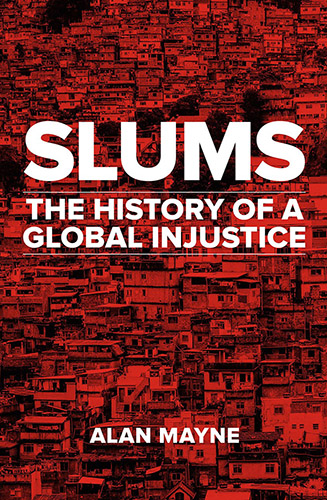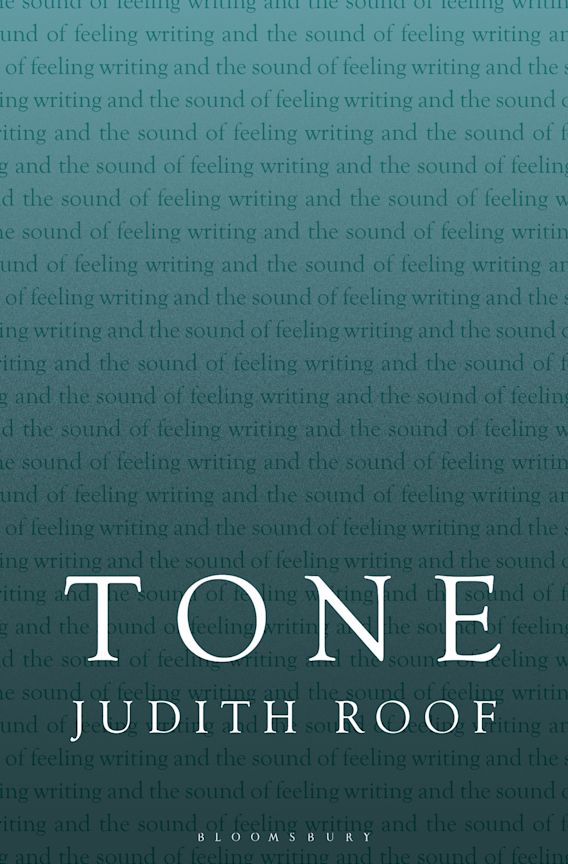The word ‘slum’ carries powerful associations. Maybe it brings to mind nineteenth-century tenements, or Dickensian poverty. Or perhaps it summons images of the poor today, living in favelas or shanty towns. Alan Mayne’s new book suggests that we think of the slum as a global injustice: not the existence of squalid living conditions, but the word ‘slum’ itself. He believes the term has been weaponised against the poor, and should not be used.
Mayne lays his cards on the table with his subtitle: ‘the history of a global injustice’. He obviously doesn’t consider slums a natural, or at any rate unavoidable, outcome of rapid urbanisation and industrialisation. Of course, one man’s slum is another man’s community, and the definitions used by urban planners and reformers have tended to be loaded with class and racial assumptions. But that doesn’t mean the term, and the concept, are without historical and cultural value.
The English word ‘slum’ has migrated into other languages, and is internationally understood. Nonetheless, its definition is culturally and temporally specific. What constitutes a slum in Australia in the early twenty-first century is not what is or was meant by a slum in other times or places. How would we define a residential area as a slum? Is it lack of access to water or other utilities? General overcrowding? Specific failures to meet particular building codes? The question is difficult to answer, because a slum is always a relative concept.
In the industrialised West, rising standards of living mean that although deprivation survives in many forms we no longer have slums, at least not in the traditional sense. Our cities don’t have neighbourhoods without running water or power (homelessness is another issue). The word slum is more often used today to refer to cities in the developing world, as these places have industrialised and urbanised. On the peripheries of the megacities of developing economies shanty towns and other impoverished settlements have emerged. This is a key part of the concept of a ‘slum’. The slum is an urban, and specifically a modern, phenomenon. Rural people may be poor, but a slum invokes urban overcrowding – and affluent urbanites to see it. Slum is also always an exonym: Mayne writes of various slum-dwellers in India who are proud of their own area – even as they may judge others nearby (in similar living conditions). Slums are always where someone else lives.
Mayne is correct that the term ‘slum’ carries a note of moral condemnation – of those who live there, or of the society that allows such living conditions to exist. But the story of slums is also tied to one of changing economic circumstances. It is only when cities reached a point of affluence, a rising middle class, that slums emerged, as they did in England after the industrial revolution. There have always been poor people living hard lives in towns and cities. But in order to start looking down on the poor’s housing, to classify certain houses and areas as ‘slums’, the middle classes needed to move up. These economic changes usually coincided with the emerging ability of the state to do something about urban poverty. This is something that only really began to emerge with modern cities. The notion of ‘slum clearance’ was a function of industrialisation, and the rise of the bureaucratic state brought with it edicts about town plans. The ‘rookeries’ of London came to be such once there was a critical mass of bourgeois villas in the rest of the town. The modernising urge meant the rookeries had to go.
Those first slum clearances were part of infrastructure projects. Poor housing was ripped out to make way for railways in London, as for Haussman’s boulevards in Paris. Later, neighbourhoods were torn out in many cities to make way for highways and overpasses. Mayne offers a detailed narrative of the histories of slum clearance, particulary in Australia and the United Kingdom, and its relationship to gentrification. But it is cynical to suggest, as Mayne does, that slum improvement was only ever about real estate.
Slums were always removed when they were in the path of the powerful, but slum clearance for its own sake, in pursuit of social improvement, also accelerated in the late nineteenth and early twentieth centuries. In the US, the slum clearance movement of New York, Chicago, and other big cities held humanitarian goals among its motives. The same progressive improvers who campaigned to end slums – among them Theodore Roosevelt – were simultaneously pushing for an end to child labour and improved health regulations.
This interest was spurred by exposés of urban privation like Jacob Riis’ photography in How the Other Half Lives (1890) – which showed precisely the kind of crowding and hardship that existed, often only a short walk from the townhouses and offices of wealthy New Yorkers. In the 1880s, the Lower East Side of Manhattan was home to an estimated 700 people per acre, a rate of overcrowding seldom matched anywhere in the world. Riis’ images showed people sleeping eight or more to a windowless room; children dressed in rags; people whose bodies demonstrated the ravages of health inflicted by poverty.
Photography made their suffering real to both authorities and charitable private citizens, and resulted in changes that did improve lives. Building codes were introduced requiring residential properties to have minimum access to light and water. Slum landlords were penalised. Of course, such improvements came with an economic downside for the very poor – some Lower East Side residents even protested the improvements because they wanted to pay as little rent as possible, often to send money back to relatives abroad. As housing was improved, it became more expensive to rent – and for some landlords, it was no longer economically viable to offer rooms to rent at all.
Who lives in slums is another part of the equation, which Mayne discusses sympathetically. As he describes, the concept of ‘slum-mindedness’ emerged in England in the nineteenth century. The idea was that those in slums were not just poorer than everyone else, but afflicted with a certain cast of mind. This was the age of charity focusing on the ‘deserving poor’ – and slum residents were not deemed to be deserving. They were too feckless or incompetent to climb the social ladder, to live ordered lives, to hold down decent jobs. While this was a cruel dismissal of many struggling in poverty – and an excuse for not helping them – Mayne acknowledges that there may have been a grain of awkward truth to this assumption about slum residents. Today psychologists might call it: ‘institutionalisation’, the human tendency to remain in familiar dysfunctional situations. Recent studies have even suggested that poverty itself can cause cognitive impairment, causing precisely the kind of decision-making that was attributed at one time to ‘slum-mindedness’.
In different times and places, the word ‘slum’ has also been used to malign the residences of particular ethnic or social groups – groups whose residential and familial patterns didn’t reflect those of the dominant ideal. Maybe they hung their laundry from windows or in the street. Maybe they didn’t respect bourgeois concepts of decorum. Maybe their food smelled strange. Multiple generations and extended family under one roof – how humans lived for most of history – came to be seen as ‘slum-like’ once enough of the middle class could afford single-family homes, and multi-family residences became associated with poverty and immigrants. Even clean, orderly neighbourhoods could be condemned as ‘slums’ based on who lived there.
The postwar period saw a great wave of slum clearance and public housing initiatives in the United Kingdom too. Bombing damage from the war presented the perfect opportunity to offer modernist housing for the working classes. But another 1.3 million people were also evicted between the mid-50s and the mid-70s to make way for new housing. The high-rise tower block appeared, replacing communities of terraces and cottages.
Australia experimented less with the high-rise public housing model, preferring to push the urban poor to the suburbs. One major exception to this is the Sirius building in Sydney, now beloved by architects as a period example of 1970s brutalism. As it is threatened with demolition for redevelopment, it is worth noting its existence was also based on ‘slum clearance’.
Most such modernist public housing was less beloved, by residents and by neighbours. The original vision of the city planners and architects was that versions of such housing should be for everyone. This was obviously the mode in the Soviet world, and to a lesser extent in the Social Democrat Scandinavian states, where many middle-class people still live in public housing. But in the English-speaking world, we ended up with planned public housing being something only for the poor. The people who designed and planned such housing would never live in it themselves. Building these new vertical warehouses required destroying existing communities, to little improvement in people’s lives.
Part of the reason the public housing towers failed is that central planning typically does. Victorian terrace houses, it is worth remembering, were built by private developers, and not government agencies (and therefore to some extent responsive to the market). Mayne notes that such terraces, which once served as housing for blue-collar workers, have become highly desirable for professionals since the 1970s as industrial suburbs gentrified. Nor did the older terraces differ much from the housing of the elites in any way but in scale. Poorer houses were smaller and more crowded, but recognisable. But the grimmest tower blocks and public housing projects bore little relationship to anywhere that more prosperous members of society might live.
For the residents of these new twentieth-century housing systems, far from gratitude at the state’s beneficence, these towers bred resentment and despair. Their architecture also proved conducive to crime – multiple towers, sometimes with overhead walkways connecting them, were much harder to police than streets with low level or terraced housing. The element of community control – ‘eyes on the street’ in Jane Jacobs’ formulation – were gone. In this architectural attempt to redress urban poverty, the cure was worse than the disease. A fact belatedly acknowledged, as over the past decade these complexes have been coming down to be replaced by more human-scale, low rise development.
The word ‘slum’ was a weapon used by town planners to justify sweeping away working-class communities for ‘urban redevelopment’ – even as the residents may have been perfectly happy. And as Mayne points out, some areas saved from the planners’ scythe, like Carlton in Melbourne, are now highly desirable.
Mayne also shows us how the word ‘slum’ ceased to be used as much after the 1960s in discussions of the West. It was replaced in some cases by ‘ghetto’, as inner-city poverty became more racially coded in the US, and cities evolved along Chicago school lines, particularly after the ‘white flight’ period, itself exacerbated by cold war priorities. The government of the United States was concerned about the potential casualties of a nuclear strike on its larger cities, and in the 1950s and 60s encouraged factories and offices to move to the suburbs, and to take their (white) employees with them. Those left behind in the cities (often minorities) found themselves with fewer job opportunities as the cities hollowed out.
Whether an area is a slum to be destroyed or a community to be preserved has always been a subjected judgment. The offensiveness of slums to observers is a key part of the issue. Mayne is also not wrong when he notes that the urgency to clear slums often correlates with the commercial value of the land of which they sit. And some clearances – such as when favelas are demolished in Brazil – just lead to the creation of newer slums, further out of town. Some of the goals of such clearances are to get rid of undesirable people, as much as undesirable housing. (One is reminded of the tactic of Olympic host cities of moving the homeless out of sight – this is not from concern for the homeless, but for the visitors who might be offended to see them).
Some people are not offended to see slums. Instead, they seek them out. Mayne’s discussion of slums extends to poverty tourism, which thrives today as it did in nineteenth-century New York and London. The term ‘slumming’ emerged to describe such daytrips, which now involve the comfortably-off gawking at the residents of favelas and shanty towns. Participants present this as the pursuit of authenticity – wanting to see the ‘real’ Rio or Delhi, instead of that city’s Park Hyatt. Never mind that these tourists would be unlikely to make a similar daytrip to a deprived neighbourhood in their own city. At least the slummers of yesteryear were exploring their own cities – and in some cases their horror at what they saw became a spur to social improvement.
As Mayne illustrates, there has always been some tension between the idea of ‘slummers’ as exploitative tourists and as would-be agents of reform. After all, it was social improvers who went slumming in the East End to expose poor living conditions in London. Contemporary poverty tourism seems less inspiring.
Soweto is now the most popular tourist destination for overseas visitors to Johannesburg. There is something about the frisson of danger that appeals. A shudder at the poverty – and then back to the airconditioned car to get the hell out of there. One blogger wrote about visiting Soweto:
I think it is worth using a tour company that mixes the highlights of Soweto with lesser-known sights, as this will increase your cultural experience. Bear in mind, though, that most of these tour operators are keen for you to ‘meet the people’, leading to you leaving a ‘donation’ or buying local craftwork. While this practice does pump a bit of money directly into the townships, it often leaves visitors feeling pressured and vulnerable – so imagine how much worse you would feel if you didn’t even have a guide to fall back on!
Yes, imagine how much worse you would feel without a guide to protect you from the grasping natives, whose homes you are treating as a freakshow. Perish the thought.
Slum tourism exists because slums operate in the cultural imaginary as places to be seen. Yes, ‘slum’ is pejorative – and also highly subjective, varying in time and place – in much the same way that poverty is relative. The ‘poverty line’ in Western Europe would count as middle-class existence in poorer countries. How we think about slums depends on what we think of as minimal standards for living (especially for those different from ourselves), or what we expect from the state in terms of housing provision.
Mayne is outraged, as we all should be, about living conditions in slums, and the treatment of their residents – particularly that areas are classified as ‘slums’. But slums themselves are not evidence of growing poverty overall, rather of growing cities. It is city wealth – and employment – that breeds slum development. Residents of slums – historically, as now – are often newcomers, either from the countryside or even from another country. In many cases, they have chosen to come. This is not to say that their living standards should not be improved, but rather to assert that slum dwellling is not necessarily some random fate befalling the hapless. Seeing slum residents as lacking agency is one of the flawed assumptions that Mayne highlights, yet he nevertheless presents them as victims in much of his thesis.
Mayne dismisses the idea that slums in nineteenth-century New York were the staging post for immigrants, who would move up in society, but that doesn’t mean it wasn’t true for many. The Irish and Italian and Jewish families who crowded into tenements in New York’s Lower East Side a hundred years ago were making a parallel economic journey to the one that rural Indians crowding into Delhi slums are today. Instead of seeing the term ‘slum’ itself as a calumny, better questions are: why do people still move to slums; why they are often seen as a goal for the rural poor? And if slums emerge when people move to cities en masse, could we ban people from moving to urban areas? Most liberal-minded people would say no. China tries, with its system of internal passports, but still has a burgeoning hidden (and slum-dwelling) unofficial population in its major cities. In many cases to ban slums, or move people along, would be to drive them away from their employment.
I am more hopeful than Mayne about the future for slum-dwellers. Slums are a function of urbanisation but also population booms – the slums of Europe’s industrialising nineteenth century cities coincided with a population increase. The many who crowd into slums in developing nations now are alive thanks to a plummeting child mortality rate – even in the poorest nations, more children are surviving today than a generation ago. Nonetheless, even as the global population swells the outlooks is good. In the last quarter century, the number of people living in absolute poverty has dropped from 1.8 billion to 800 million. But the proportion of the poor living in cities has grown, as poorer nations urbanise, so slum populations also grow.
At points, Mayne struggles with the contradictions of his own thesis. ‘Slum-mindedness’ is prejudice: but there may be some truth behind it. ‘Slums are hellholes and nests of crime’: unfair prejudice, but seeing slums instead as thriving alternative communities is naive and idealistic. Slum neighbourhoods are likely to be characterised by higher rates of crime than other neighbourhoods. That the word ‘slum’ itself is a calumny and should not be used is Mayne’s point. But language being what it is, I’m cynical enough to believe that whatever well-intentioned euphemism is adopted instead will soon acquire the same pejorative connotations, and be freighted with the same assumptions. The term ‘Third World’ was replaced by ‘global south’ – which along with being bizarrely Eurocentric (is the southern hemisphere all backwards?) is unhelpful in its vagueness. Should slum be replaced by some term like ‘disadvantaged residential space’? Moreover, whatever term is used, surely the real problems for those who live there are lack of clean water and adequate shelter – not the fact that someone describes their residence as a ‘slum’ in a UN report.







